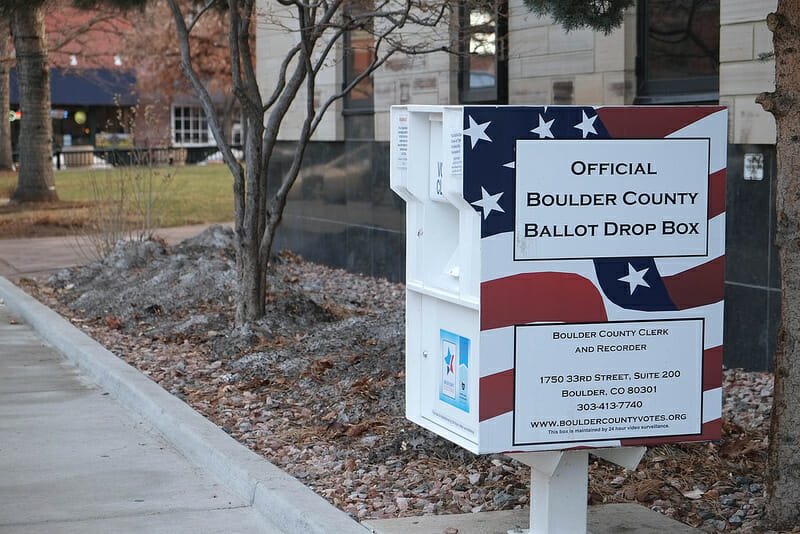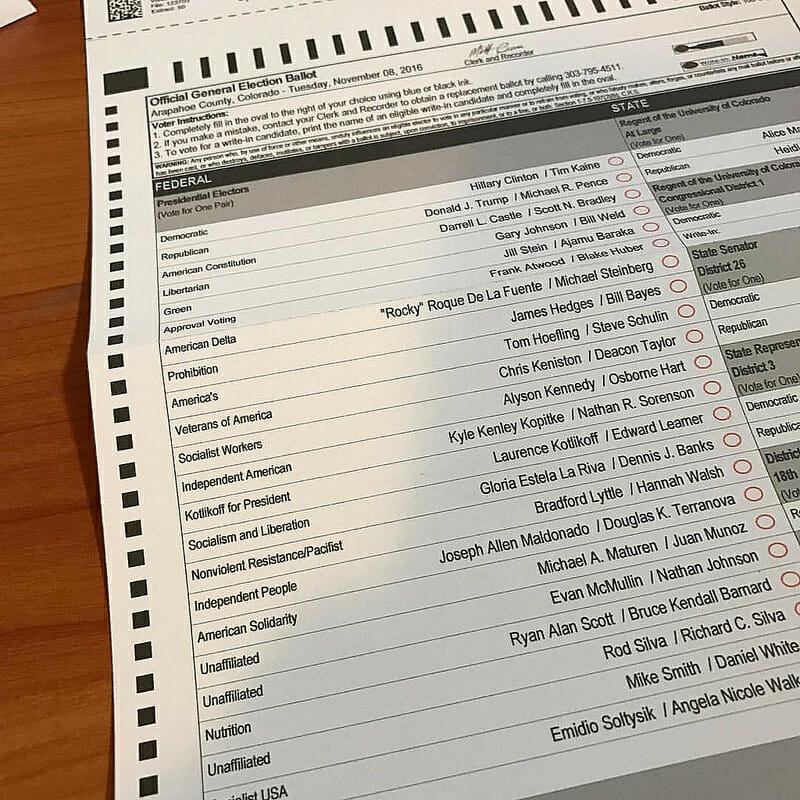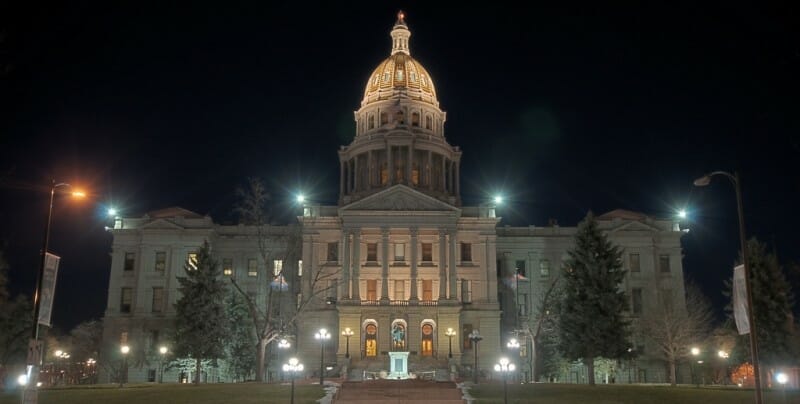Colorado’s new vote checks could help discover vote hacks
- August 10, 2017
- Posted by:
- Categories: Archer News, Cyber Crime, Cyberattack, Hacking, Posts with image

Will the rest of the states follow through with “groundbreaking” new election check system?
You did your civic duty. You voted. You may even get a red, white and blue sticker to wear proudly on your T-shirt.
But are you sure your vote will be counted — and counted properly?
If your state uses computers for voting or counting results, there’s a chance it may not, experts say.
“We know that computers can have some bugs or even cleverly-hidden malicious code called malware,” said Barbara Simons, president of Verified Voting, a non-profit, nonpartisan group encouraging secure and accurate elections.
“As we learned in 2016, we also have to worry about the possibility of computers and voting systems being hacked,” she added.

A WINvote voting machine, described by WIRED in 2015 as “the e-voting machine so easy to hack, it will take your breath away.” Viriginia finally stopped using the machines later that year. Image credit: Verified Voting
But if you live in Colorado, you’ll now have a better chance of finding out if your vote fell victim to a glitch or a hack.
Colorado is the first state to launch an advanced new system to check results after an election.
It’s called a risk-limiting audit, or RLA, said to be highly efficient — and highly accurate.
“I think what is happening in Colorado is very exciting,” Simons told Archer News. “It’s groundbreaking, really.”
Digging in
At Colorado’s state elections headquarters, the team is just beginning to dig into the first round of new software for the new system.
In about a month, they’ll do a state-wide test.
Then on November 7, it’s election day.
Nine days after the election — when military and overseas ballots must be in and any ballot signature verification issues are resolved — the special audit begins.
“The basic idea is that you want to be sure that your computer, which counted the votes, picked the right winner,” said Dan Zimmerman with Free and Fair, the Portland, Oregon-based company providing the system for Colorado.

Colorado allows 8 days after an election for voters to resolve signature verification problems. Photo credit: Scott McLeod via Foter.com / CC BY
Old checks
States have done election checks before.
In Colorado, they used to take randomly-selected voting devices and count at least 500 randomly-selected ballots.
But that would only tell you how well those individual machines did, not how accurate the whole election results were.
Now, experts have come up with an algorithm to figure out just how many ballots you need to count to see if the election results are accurate, plus how to select them.
“I think what it’s going to enable us to do is to tell Colorado voters, ‘Really, if there was a mistake in this tabulation, we would have found it,’” said Dwight Shellman, county support manager of Colorado’s Elections Division.

Colorado will do a special check of its ballots to make sure the computers are counting the votes correctly. Photo credit: bad9brad via Foter.com / CC BY-ND
It’s on
Come November 16, the new elections check is on.
The Secretary of State will decide how accurate the audit needs to be.
You might think he would choose 100%. But that’s a big bite.
“The only way you could be 100% certain is to do a total manual recount,” explained Simons.
That could be very expensive and time-consuming, and is usually saved for disputed races.
Colorado’s Secretary of State could instead choose 95%.
What does that mean? This is where it gets a little complicated, and involves statistics.
“What that means is,” Shellman explained, “there was a 95% statistical probability that the audit itself would have discovered an incorrect outcome.”
That also means the “risk limit” — as in the name risk-limiting audit — is 5%.
“A 5% risk limit means that after the audit, there will be at most a 5% risk that the incorrect winner was identified,” Zimmerman said.
That’s impressive, according to Colorado officials.
“We’ve never been able to do an audit with that kind of statistical confidence before,” Shellman told Archer News.

One of the algorithms used to figure out how many ballots to count to make sure an election is accurate in a risk-limiting audit. Image credit: Dwight Shellman
Back to paper
A key part of this special audit is paper ballots.
Counting teams — bipartisan groups of elections “judges” — will count up the number of paper ballots as determined by the new system.
The software then compares those results to what the computers counted.
If they match enough, the audit is over.
If they don’t, the count continues until the results are verified.
It may sound simple, but it takes special software and systems — and no state has done it before.
“Colorado is really a pioneer,” said Simons.

Colorado state capitol building. Colorado is the first state to try risk-limiting audits for elections. Photo credit: Brian Papantonio via Foter.com / CC BY
“Scandal”
Other states may be watching this groundbreaking elections experiment. Not all can adopt the system, however.
They need paper ballots to count the results.
But 14 states have partial or completely paperless voting systems, which means they can’t be recounted, Simons warned.
“It is crazy,” Simons said.
The five with paperless systems are New Jersey, South Carolina, Georgia, Louisiana and Delaware, according to Verified Voting.
The nine with partial paper systems are Arkansas, Indiana, Kentucky, Tennessee, Mississippi, Texas, Pennsylvania, Virginia, and Kansas.
“Not only is it crazy, I consider it a scandal,” she added.

This map shows which states have voting systems that allow them to recount after an election. The dark brown states are the worst offenders, according to Verified Voting. Image credit: Verified Voting
“Trustworthy elections”
Both Verified Voting and Free and Fair say they started their work years ago, long before the controversial 2016 elections.
“As for why we feel our work is important, we believe that trustworthy elections are critical to democracy, and that our approach to elections systems and services is the best way to provide trustworthy elections for the American public going forward,” said Free and Fair’s Zimmerman.
Now, the urgency may be increasing.
“U.S. intelligence officials have warned that they expect Russia to be back in 2018 with an even more sophisticated digital interference campaign and have pressed election officials to prepare for the worst,” reported Politico.
But now, for the first time, a state is putting the risk-limiting election audit into use. And some experts hope other states will follow.
The states will need new risk-limiting software, a new system to keep track of the votes, and in some cases, a step back to paper.
“We need to get paper ballots throughout the entire country, everywhere,” said Verified Voting’s Simons.
“And then we need to have mandatory audits,” she added. “Ideally, risk-limiting audits. That’s the gold standard.”
You can check your state’s voting methods on this map from Verified Voting.
Featured image: Boulder Country, Colorado ballot drop box in 2016. Photo credit: pasa47 via Foter.com / CC BY
Comments are closed.
